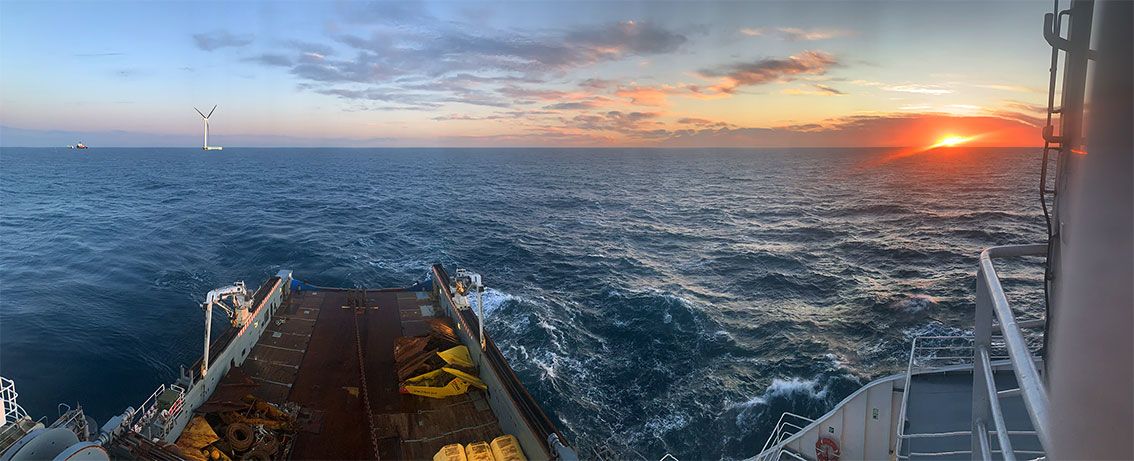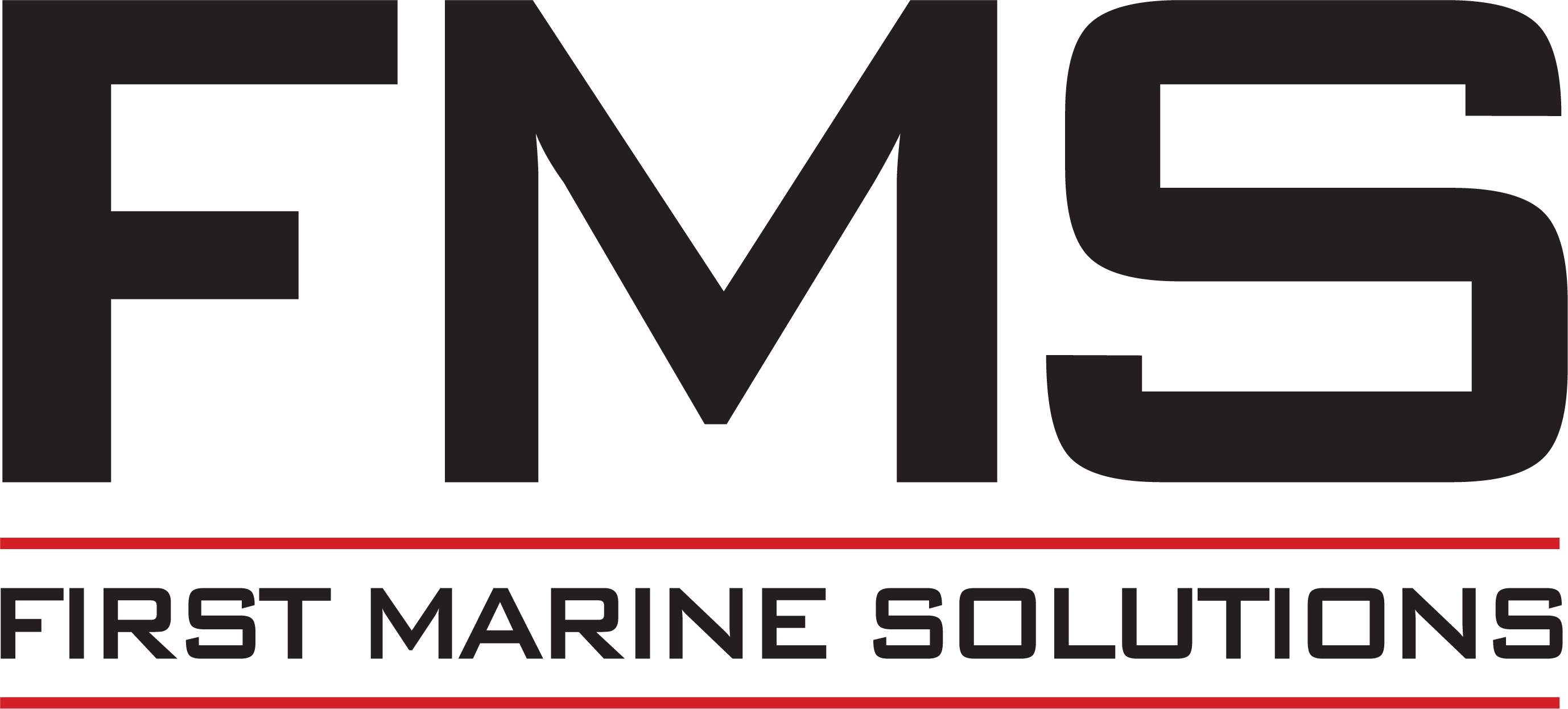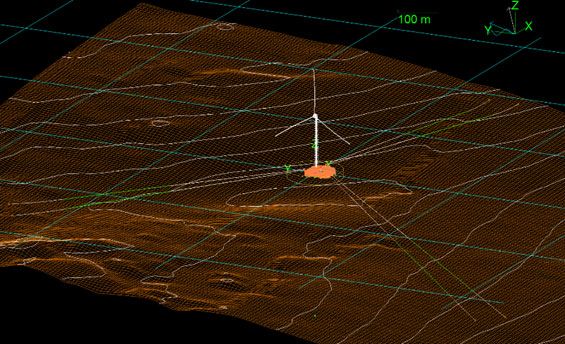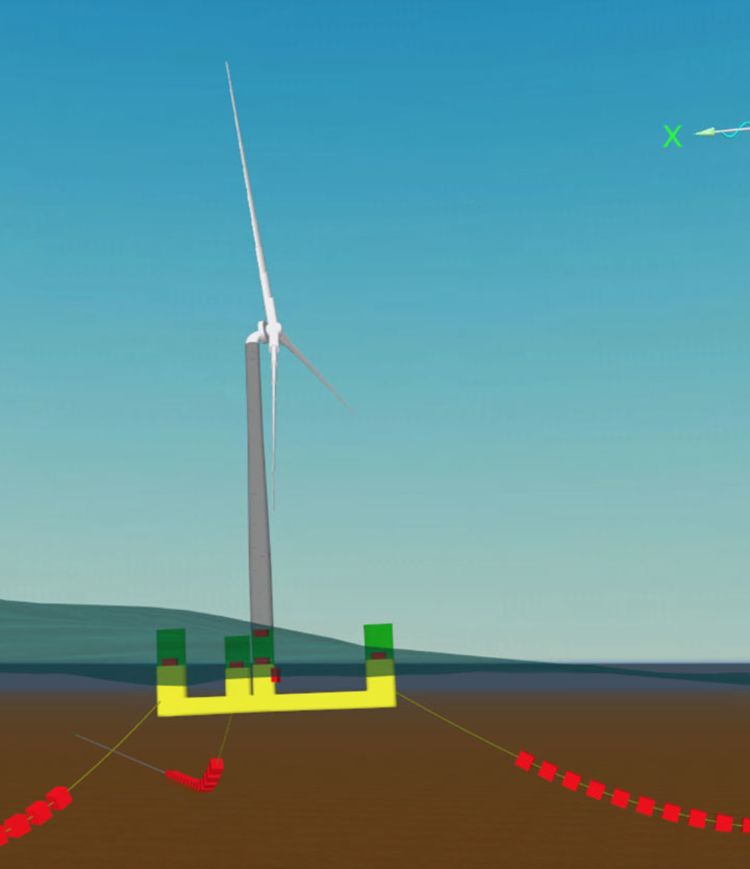GREEN VOLT:
Mooring and Anchoring Research
for Offshore Floating Wind

Founded by two of the floating wind industry’s leading experts, Flotation Energy submitted a joint marine licence application for the proposed Green Volt floating offshore wind farm in February 2023.
Located around 80km from shore, Green Volt is at the forefront of global offshore wind developments and touted to become the world’s largest offshore floating wind farm by 2027.
As the North Sea’s leading provider of mooring and survey services to the offshore energy sector, we were contacted by Flotation Energy in 2022, at pre-application stage, with the request that our Glasgow-based Floating Offshore Wind engineering team address the challenge of understanding the relative mooring requirements for the technology options under consideration, to ultimately guide selection.
The Situation
Integrating with a grid connected offshore wind farm offers the potential to provide 100% of oil and gas platforms power needs. Green Volt will also provide power to the UK grid - eliminating a total of at least 500,000 tonnes of carbon dioxide emissions annually.
With a proposed location over the former Ettrick and Blackbird oil and gas fields in the Central North Sea, this pioneering project will use floating offshore wind to address a major source of UK carbon dioxide emissions - those produced from the production and processing of offshore oil and gas.
Particular consideration was made towards the structural loading in light of the expected North Sea environmental conditions to understand location-specific responses.
What We Did
Our study conducted a quantitative analysis comparing various types of floating structures (semi-submersible, barge and tension-leg-platform structures) loading in the Green Volt location.
Based on previous work and metocean data previously derived for the location, we utilised our calibrated models and existing site data to achieve a running start and provide results from day 1.
Influencing factors we considered included:
- The reliability and up-time provided by field-proven systems, bearing mind the requirement for Green Volt windfarm to power operating oil and gas assets.
- The potential layout constraints based on existing oil and gas infrastructure on the seabed and large mooring radii associated with traditional catenary solutions.
- The risk of dragging anchors
Results
Our study delivered an overview of mooring/anchoring technology, ancillary systems and operations and assisted Flotation Energy in:
- Determining the anchor radii required for each substructure type - how the various mooring
- systems for semi-submersibles, barges and tension-leg platform structures behave at the location
- Identifying anchor solutions
- Failure analysis if line was to part/anchor was to drag
- Understanding the impacts of redundancy
- Identifying costs of higher line numbers
- The approach of substructure suppliers in M&A scope
Find out more at
www.firstmarinesolutions.com
Email:
dave.mcginlay@firstmarinesolutions.com




